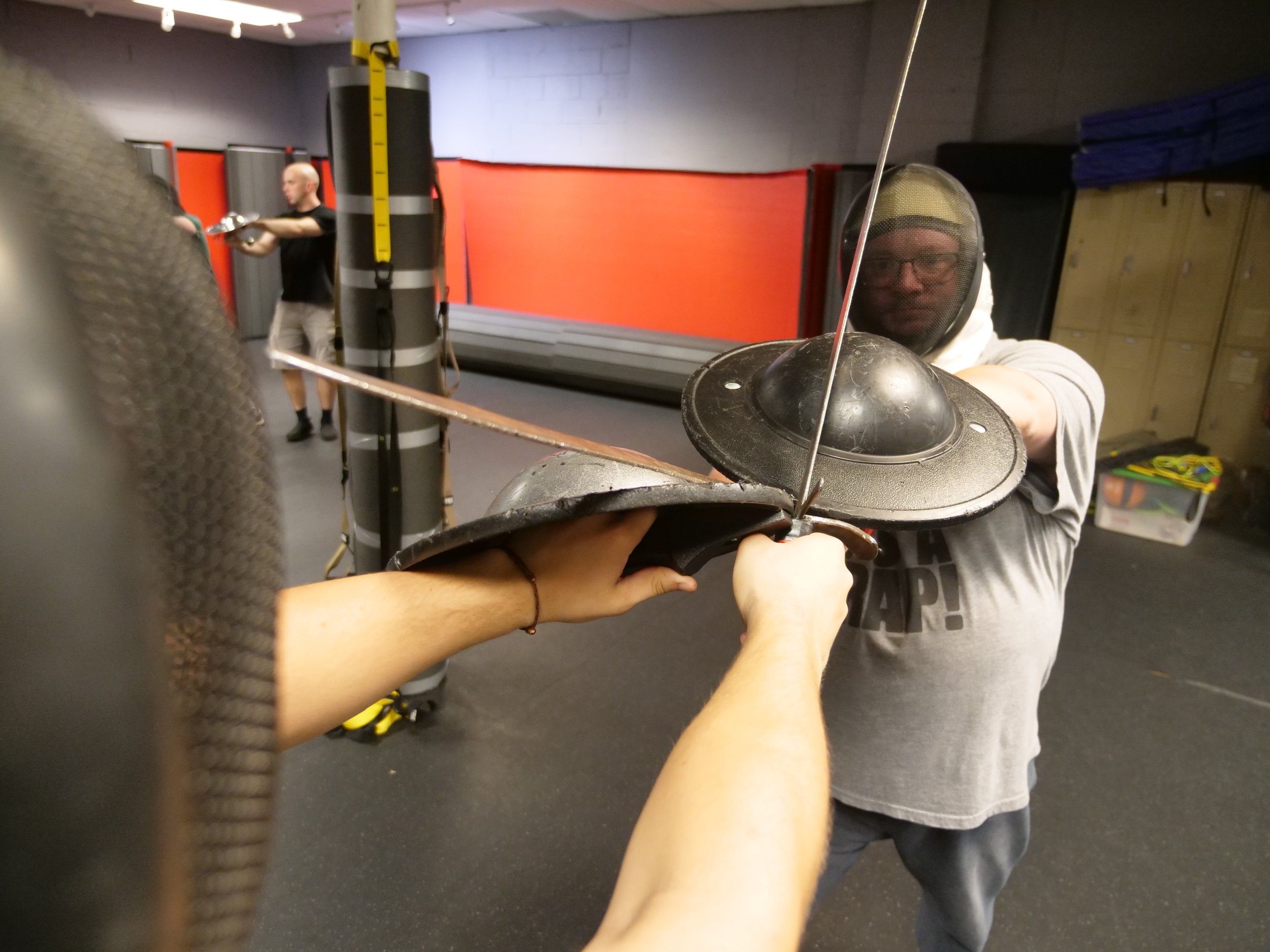
OUR SWORD AND SHIELD CLASSES
Tuesdays at 6:30PM-7:30PM
We have students begin their studies with sword and buckler, learning from the I.33 manuals. This small shield was used throughout the medieval and renaissance period through Europe and Asia as a self-defense tool. The I.33 manual is considered to be one of the oldest sword-fighting manuals in existence from Europe and details multiple techniques of how to use a single-handed sword with a buckler through descriptions and illustrations. We believe that starting with the humble buckler helps to condition students for having both hands occupied and utilizing two different tools at the same time.
Specifically from European history, there is a lack of manuscripts for the many other types of shield combat that may have been used by soldiers and knights. While students begin with sword and buckler, we teach and experiment with these other shield-types through what source material can be found and active drills and sparring.
Sword and shield makes for a dynamic and fun class that keeps the body moving and the mind working. Students will not only get a deep dive into one of Europe’s oldest sword disciplines but get a good workout.
GALLERY


















SWORD AND SHIELD
Almost every culture that has developed swordplay has utilized some kind of shield in combat. From small bucklers for self-defense on the street to the towering scutum used in large formations, the combination of a sharp sword and a protective shield has consistently appeared throughout history.
THE OLDEST STYLE OF FIGHTING
One of, if not THE oldest sword manual we know if is the I.33 treaties. This manual describes and illustrates the use of dueling with an arming sword and buckler. Bucklers are smaller, metallic shields that are held in a fencer’s off-hand by a center-mounted bar. While difficult to extrapolate what is being done by studying the drawings, many have replicated the techniques in the real world. This kind of fighting is fast, technical, and very nuanced which is almost surely unlike how modern cinema would portray shield-and-sword combat. Historically, bucklers were carried both on the battlefield and for self-defense, mostly the latter. Its smaller size made it easier to carry on your person and quick to deploy, especially if it included a belt-clip.
A BATTLEFIELD STANDARD
Larger shields such as the heater, rotella, and kite styles found most of their use on open battlefields where multiple enemies and weapons would be used. These shields were often a part of a larger system of equipment and specific to the unit they were used in. Battlefields presented more dangers to a soldier than just sharp swords and spears. A warrior could find themselves needing their shield to protect against flying projectiles from any direction.
Most of these shields were used with a strap-system as opposed to the center-gripped position. This allowed the user to brace the shield and distribute its weight more evenly on the arm while also still covering a good portion of their body. This would also decrease the fatigue that comes with holding a shield out from the body by one point of contact for too long.
Shields like the Roman scutum and Viking shield were designed to be used within highly coordinate unit maneuvers that could utilize other shields to defeat larger groups of enemies. Swords were sometimes specialized (see the gladius) to work within the framework of these tactics.




